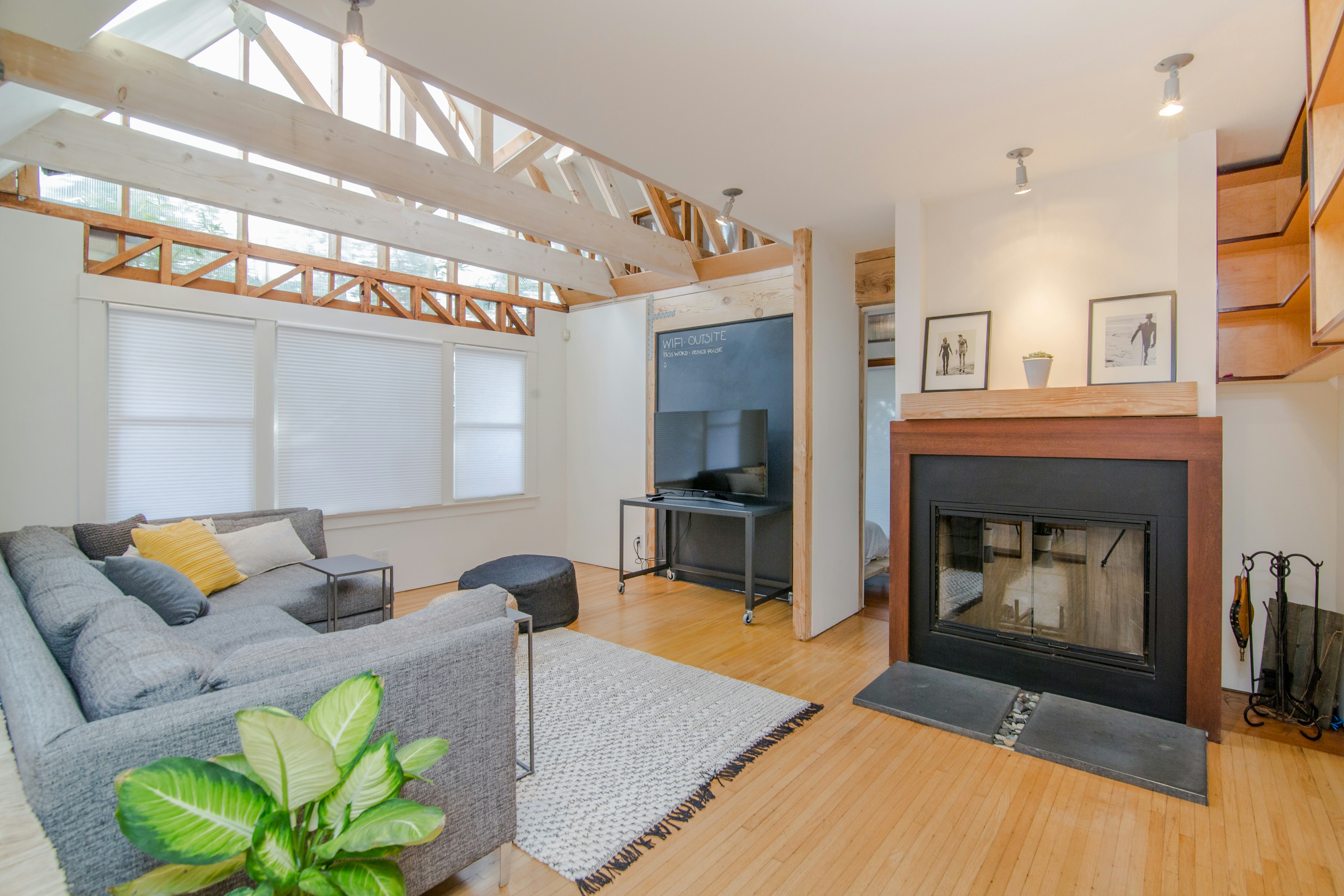
The Impact of Sustainable Materials on Home Design
Are you looking to create a beautiful and environmentally friendly home? Sustainable materials play a crucial role in modern home design, offering an effective way to reduce greenhouse gas emissions. This article will explore the importance of sustainable building materials, how they influence aesthetic choices, and their impact on energy efficiency. By reading on, homeowners will learn how to overcome challenges in using materials like recycled steel, clay, and soil, making informed decisions for their custom homes while supporting a healthier planet.
Key Takeaways
Sustainable materials minimize environmental impact and promote energy efficiency in home design.
Materials like bamboo and recycled glass benefit the ecosystem and enhance home aesthetics.
Innovations in sustainable building technologies lead to cost-effective and durable housing solutions.
Consumer demand drives the development of eco-friendly materials in the construction industry.
Understanding sustainable options helps homeowners reduce their carbon footprint while improving living comfort.
The Importance of Sustainable Building Materials in Modern Home Design

Sustainable building materials play a crucial role in modern home design. This section covers essential topics, starting with clearly defining sustainable materials and their significance in architecture. It also explores the environmental benefits, such as reduced transport emissions and resource conservation, and highlights economic advantages through strategies like upcycling. Finally, common types of sustainable materials, including rammed earth, will be identified to provide a comprehensive understanding.
Understanding What Sustainable Building Materials Are
Sustainable building materials minimize environmental impact throughout their lifecycle, from extraction to construction. These materials help combat resource depletion by using alternatives like recycled concrete and enhancing energy efficiency by integrating solar energy systems. Understanding embodied energy is vital; materials with lower embodied energy consume fewer resources, supporting eco-friendly home design practices while simultaneously providing long-term economic benefits.
Exploring the Environmental Benefits of Sustainable Materials
Sustainable materials, such as recycled sand and eco-friendly carpet, support environmentally friendly construction materials and reduce overall consumption. By focusing on these resources, civil engineers can minimize waste and lower the carbon footprint associated with building projects. Choosing sustainable options promotes responsible resource use and contributes to healthier living spaces, benefiting both the environment and homeowners.
Assessing the Economic Advantages of Using Sustainable Resources
Using sustainable resources in home design offers significant economic benefits. For instance, materials like engineered wood and prefabrication techniques can reduce overall construction costs by streamlining the building process and minimizing waste.
Additionally, opting for steel instead of traditional coal-based materials can lead to long-term savings due to durability and lower maintenance needs, ultimately making homes more cost-effective and environmentally friendly.
Identifying Common Types of Sustainable Building Materials
Selecting sustainable building materials is key to creating an eco-friendly home. Here are some of the most effective options:
Recycled Wood Composites
Made from reclaimed or fast-growing wood fibers
Reduces deforestation while maintaining structural integrity
Durable and suitable for flooring, cabinetry, and framing
Natural Fiber Insulation
Includes materials like wool, recycled cotton, and hemp
Provides excellent thermal performance and energy efficiency
Free from harmful chemicals found in synthetic insulation
Low-VOC Adhesives
Made from bio-based or plant-derived ingredients
Minimizes toxic emissions for healthier indoor air quality
Enhances durability while supporting sustainable construction
How Sustainable Building Materials Influence Aesthetic Choices

Sustainable materials significantly influence aesthetic choices in home design. Examining design flexibility, options like mudbrick create unique spaces while offering durability. Innovative uses of natural materials enhance indoor air quality, connecting the home with the natural environment. Exploring color palettes and textures that complement sustainable architectural materials also fosters a harmonious and visually appealing home.
Examining the Design Flexibility Offered by Sustainable Options
Sustainable building materials offer remarkable design flexibility, allowing homeowners to create unique and visually appealing spaces. Natural fiber products, for instance, can be incorporated into insulation or finishes, enhancing aesthetics while supporting the ecosystem.
Additionally, using materials like oak and eco-friendly roof tiles provides durability. It creates a warm and inviting atmosphere, making homes both beautiful and functional while minimizing issues with pests like insects.
Highlighting Innovative Uses of Natural Materials in Home Design
Innovative uses of natural materials can significantly lower a home's carbon footprint while enhancing its design. For instance, repurposing demolition waste such as bricks and wood ties a home's aesthetic to its surroundings and prevents unnecessary waste in landfills. Additionally, incorporating materials like aluminum, sourced from ore and recycled products, offers both durability and a sleek appearance, making it an attractive choice for modern homes.
Exploring Color Palettes and Textures That Complement Sustainability
Color palettes and textures play a vital role in enhancing the aesthetic appeal of homes using sustainable materials. For example, using fiberglass can create beautiful finishes that draw in natural light while minimizing carbon dioxide emissions during production.
Additionally, a mixture of metal elements, combined with eco-friendly options that contain low levels of formaldehyde, can result in striking designs that are both safe for occupants and pleasing to the eye, demonstrating how sustainability and style can go hand in hand.
The Impact of Energy Efficiency on Sustainable Home Design

Sustainable materials play a significant role in energy-efficient home design. Understanding how these materials contribute to energy conservation is essential. Evaluating insulation properties, such as foam, helps maintain comfortable indoor temperatures.
Additionally, analyzing the role of sustainable materials in carbon capture and storage is vital for reducing carbon footprints and promoting environmental design that utilizes natural resources effectively.
Understanding How Materials Contribute to Energy Conservation
Sustainable materials significantly enhance energy conservation in home design by improving overall efficiency. For example, roofs made from innovative materials help regulate indoor temperatures, reducing heating and cooling demands. Additionally, beams crafted from recycled resources can contribute to lower energy usage during manufacturing, further supporting eco-friendly practices in construction.
Evaluating Insulation Properties of Sustainable Materials
Sustainable insulation is vital in energy-efficient home design and significantly influences interior design choices. Homeowners can use materials that promote reuse to enhance thermal performance while reducing their carbon footprint. For instance, using recycled materials like denim or cellulose offers effective insulation and supports environmentally friendly construction practices, making homes more comfortable and energy-efficient.
Analyzing the Role of Sustainable Materials in Reducing Carbon Footprints
Sustainable materials play a pivotal role in reducing carbon footprints in home design. For instance, using sustainable roofing options enhances energy efficiency and minimizes environmental impact throughout their lifespan. Incorporating eco-friendly terrazzo made from recycled glass or resin helps create a strong foundation while lowering greenhouse gas emissions, making sustainable architecture a practical choice for homeowners seeking to lessen their ecological footprint.
Overcoming Challenges in Using Sustainable Building Materials

Transitioning to sustainable building materials presents challenges, but understanding these obstacles can help builders and homeowners make informed choices. Addressing misconceptions, improving access to eco-friendly materials, and implementing cost-effective sustainability strategies can ensure that environmentally responsible construction is both practical and attainable.
Addressing Misconceptions About Sustainable Materials
Some homeowners and builders hesitate to adopt sustainable materials due to concerns about durability, performance, and cost. Common misconceptions include the belief that natural materials like rammed earth, bamboo, and reclaimed wood are weaker than traditional materials or that eco-friendly insulation lacks efficiency.
However, advancements in engineered bamboo, cross-laminated timber (CLT), and recycled insulation have proven that sustainable materials can match or even exceed conventional options in strength, longevity, and thermal performance. Educating consumers about these innovations helps drive adoption and confidence in sustainable construction.
Discussing the Availability and Sourcing of Materials
Sourcing sustainable materials can be challenging, particularly in regions with underdeveloped supply chains for eco-friendly products. Homeowners and builders may struggle to find certified, sustainably harvested wood, recycled steel, or non-toxic adhesives locally, leading to increased costs or limited options.
One solution is prioritizing locally available and reclaimed materials—such as repurposed bricks, salvaged wood, or low-carbon concrete—which reduces transportation emissions while supporting regional economies. Working with sustainable material suppliers or participating in building material exchanges can improve accessibility.
Strategies for Integrating Sustainability Within Budget Constraints
A common concern is that sustainable building materials are more expensive than conventional alternatives. However, strategic material selection and design efficiencies can offset upfront costs while delivering long-term savings. For example:
Prefabricated components reduce labor costs and construction waste.
Recycled materials like reclaimed wood or crushed concrete can be more affordable than new materials.
Passive design principles—such as maximizing natural light and ventilation—reduce the need for high-cost mechanical systems.
Conclusion
Sustainable materials are vital in modern home design, significantly enhancing both environmental and economic aspects. They reduce a home's carbon footprint and provide long-term benefits through durability and energy efficiency. Homeowners create healthier living spaces that align with eco-friendly practices by choosing sustainable options. Embracing these materials contributes to a responsible future, making home design more innovative and sustainable.

